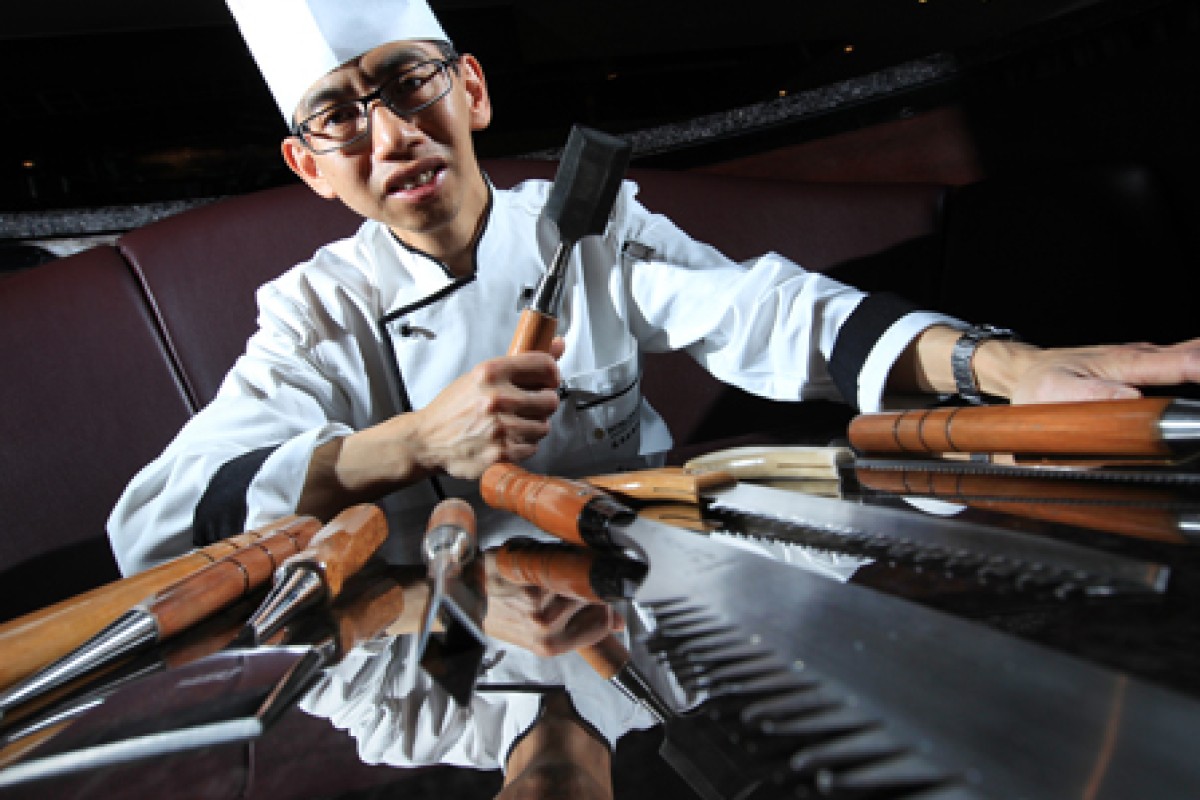 Snow sculptor Alan Tam is happy to get out of the kitchen, pack his tools and head for chilly climates if he has a chance to do what he loves, like creating a snow dragon (bottom).
Snow sculptor Alan Tam is happy to get out of the kitchen, pack his tools and head for chilly climates if he has a chance to do what he loves, like creating a snow dragon (bottom).Led by Alan Tam Wai-lun, a chef at the InterContinental Grand Stanford Hotel, the Hong Kong ice-carving team was crowned champion of the 39th International Snow Sculpture Contest in Sapporo, Japan, in February. It was the second time Tam had won the contest and the 12th victory for the Hong Kong team, giving it a record number of wins in the 39-year-old contest.
But for Tam, the contests are not about winning awards. "I very much treasure interacting with ice and snow sculptors from around the world," he says. "The competition is not all about winning; it feels great to talk with people who share the same interests."
Tam also thinks participating in such competitions is a great way to promote Hong Kong. "When I am competing, I am not representing myself or the hotel, I am representing Hong Kong," he says. "This year, I created 'The Leaping Dragon' sculpture, because it is the year of the dragon, and to celebrate the 15th anniversary of the establishment of the Hong Kong Special Administrative Region."
In this year's International Snow Sculpture Contest, participants were given four days to carve a sculpture from a three-metre-high cube of snow.
"The outdoor temperature can swing between zero degrees Celsius and minus 10 degrees, but I was sweating because snow carving is very physical," Tam says. "As sunshine, wind and rain can affect the sculpture, we have to cover it quickly to protect it. Often when I return from a competition, people ask if I have been to the tropics to sunbathe. I get tanned from the sunlight reflected by the snow."
As there is no snow in Hong Kong, Tam learned his craft by practising on ice. "Ice and snow are the same thing to me. Ice and snow carving is part of the culture of countries of the northern hemisphere, such as Russia and Canada, but the best teams are from warmer regions such as Hong Kong, Malaysia and Singapore," he says. "I guess people up north see snow for months in winter and are not fascinated by it, but I jump at every chance to work with snow." One downside to ice and snow carving is that the creators only get to keep their masterpieces in photographic format. But Tam doesn't mind because the process of creating the sculpture is what he loves most.
The kitchen artist says ice carving used to be an important part of fine dining, but not any more. "I used to carve ice sculptures to decorate hotel ballrooms for banquets and to display seafood at buffet tables, but now I do it as an art," Tam says. "Over the years, I have been invited to give demonstrations at food fairs and shopping malls."
Now the ice king is ready for a new, drier challenge. Later this year he will visit South Korea to try his hand at sand carving.
